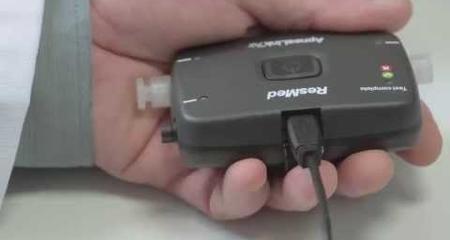Many individuals with OSA and snoring have narrowing of the airway in the lower throat that contributes to blockage during sleep. The cause of this blockage often varies, so multiple procedures have been developed to correct or reduce the blockage. Selecting the best procedure for any patient is based on many factors. No single procedure is best for all. The following procedures modify tissues of the lower pharynx when the involved tissues are obstructive or abnormal.
Mandibular (Lower Jaw) Advancement
This procedure moves the bone, soft tissue and muscles of the jaw forward to enlarge the airway. The amount of advancement may be limited by the natural position of the teeth. People with a backward positioning of the teeth and jaw may benefit from lower jaw advancement alone.
Bimaxillary (Upper and Lower Jaw) Advancement
This procedure is done for people with significant jaw deficiency, morbid obesity, and those with obstructive sleep apnea who have failed more conservative treatments. The procedure involves cutting the bones of the upper and lower jaws and lengthening them a small amount. The tongue and the palate are pulled forward, enlarging the airway. The surgery also enlarges the mouth to provide more room for the tongue. Both jaws are advanced together, retaining the person’s bite. The surgery is performed through incisions inside the mouth.
Limited Mandibular Osteotomy (Cutting the Jaw Bone) and Genioglossus Advancement
Genioglossus advancement detaches the tongue muscle from the back of the mandible (jaw bone) and moves it to the front. Moving this attachment pulls the tongue forward and enlarges the airway. To do this, the primary tongue muscle that controls the size of the lower airway (genioglossus muscle) and a small piece of attached bone are moved. The procedure has the advantage over other mandible surgeries in that it does not surgically move the teeth and does not require braces or orthodontic procedures.
 Tongue Suspension
Tongue Suspension
An alternative to mandibular advancement procedures, that does not require osteotomies or skeletal adjustments, is to perform tongue suspension. These procedures use an implantable device to help support the tongue and prevent collapse during sleep. Several different devices are used to perform the procedure. For most patients, a successful result requires that tongue suspension be performed in conjunction with other procedures.
Midline glossectomy (MLG)
For many individuals, the back of the tongue is too large for the airway. For some this may be due to large lingual tonsils, and excessively small lower jaw, increased fat, or other causes. For some patients reducing the size of the tongue increases the size of the lower throat (pharyngeal) airway.
In the 1990s, these procedures were done with traditional surgical tools or lasers. These resulted in excessive pain and recovery for many patients. Newer plasma and radiofrequency surgical tools provide less damaging methods to reduce the size of the tongue and to increase the airway size with lower side effects, improved healing and faster recovery. For some patients, these procedures can be done as outpatient or office-based procedures.


